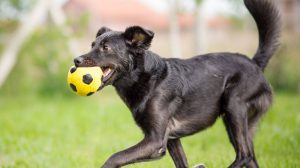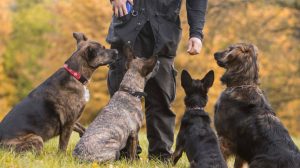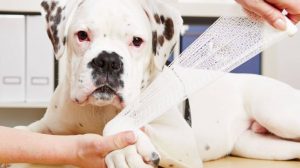Torsion of the stomach in dogs, also known as torsion ventriculi, is a severe emergency and must be treated as soon as possible. In the worst case, it can even be fatal. But what are the symptoms of this disease?

The anatomy of the dog favours the stomach torsion. In these animals, the stomach is only attached by a few ligaments in the abdomen to have some leeway. If this suspension starts to sway due to a jerky movement of the fur nose, the organ may turn around its axis – a health catastrophe.
If you suspect a torsion in the stomach, you should immediately consult a veterinarian. Because a short time after the twisting of the stomach, the condition of your four-legged friend can become life-threatening, and you cannot help him yourself. Since every second counts, you should pay close attention to the related symptoms.
Stomach torsion in dogs: recognize symptoms
The stomach twisting causes only a brief ache that you may not even notice in your dog – it may give a short whine. The following signs of torsion include, in particular, restlessness: The dog begins to walk back and forth. His back is arched; his stomach pulled in profoundly. A dog with torsion ventriculi also no longer likes to lie down – it changes places frequently and does not stay in one place for long. Also, typical symptoms of a twisted stomach are
● A bloated stomach
● Heavy salivation
● Food is refused
● Constant choking
● Unsuccessful attempts to defecate.
The course of the dangerous dog disease
With torsion ventriculi, the stomach has entirely rotated around its axis. As a result, both the digestive organ’s entrance and exit are pinched off. Even the most minor amounts of food cause gases to form in the stomach. Due to the blocked transport ducts, these cannot escape from the stomach and therefore ensure that the stomach gradually inflates more and more.
Because the stomach presses on the lungs, it can lead to shortness of breath as the disease progresses. The mucous membrane of the mouth becomes pale, and the dog becomes weaker and weaker until it can no longer stand and becomes completely listless. If left untreated, torsion of the stomach can lead to death in just a few hours.
Reduce the risk of gastric torsion
Large, broad-chested dogs are particularly susceptible to this type of disease, as their stomachs have more room to manoeuvre, as are older dogs, whose connective tissue is weakening. To keep the risk of stomach torsion as low as possible, you should heed the following tips:
● Don’t let your dog drink large amounts of water at once, as this increases the swinging motion of the stomach.
● The same applies to feeding: Instead of one large portion a day, several small feedings are better.
● Also, feed your wet pet food and easily digestible food. Too much dry food or things that are difficult to digest can promote gastric torsion.
● Avoid stressing your furry friend, especially when feeding.
● Let your dog rest after eating. He must not jump around wildly or roll over; the full stomach could turn more easily.








